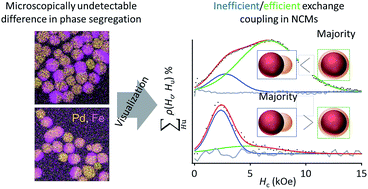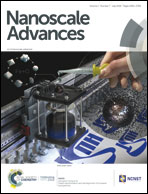Formation of strong L10-FePd/α-Fe nanocomposite magnets by visualizing efficient exchange coupling†
Abstract
Conceptual nanocomposite magnets (NCMs) composed of exchange-coupled hard/soft magnetic phases have been expected to show excellent magnetic performance based on simultaneous high coercivity (Hc) and high saturation magnetization (Ms). In our previous works, however, the Hc was considerably lower than its theoretical value (Ha), which prevented us from improving the performance of NCMs. Here, we show that the Hc of isolated particulate L10-FePd/α-Fe NCMs is dominated by their phase segregation into core/shell-like structures versus Janus-like structures. Using first-order reversal curve (FORC) analysis, we clearly distinguished a microscopically undetectable difference in the phase-segregation structure in the NCMs, finding both efficient and inefficient exchange coupling. The nanostructurally controlled NCMs dominated by core/shell-like structure with efficient exchange coupling showed the largest energy product ((BH)max = 17.5 MGOe) in the Fe–Pd system and the highest Hc/Ha value (26.5%) among all NCM powders.



 Please wait while we load your content...
Please wait while we load your content...